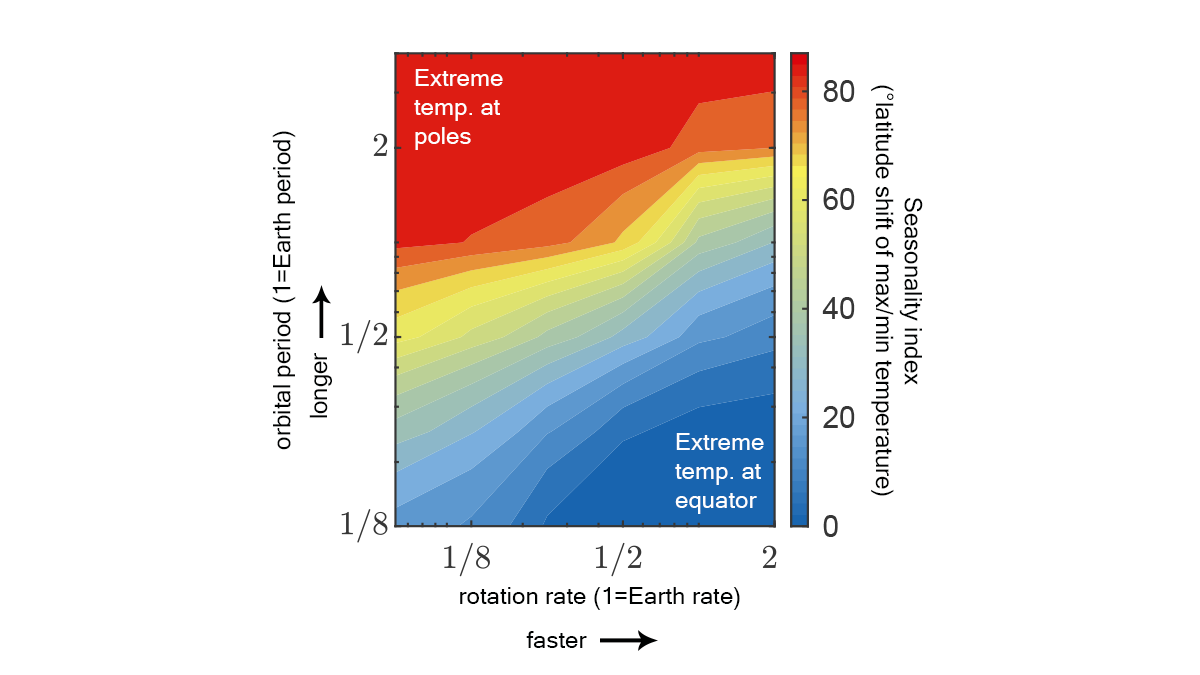Source: AGU Advances
Editors’ Highlights are summaries of recent papers by AGU’s journal editors.
As Earth-like planets with atmospheres are discovered around other stars, a key question is: what controls their climates? Guendelman & Kaspi [2022] perform physics-based modeling of the effects of planetary motion – orbital period, rotation rate, and obliquity (tilt) – to determine what governs the intensity of seasons and their spatial patterns. As expected, seasons become more intense as the orbital period lengthens and as the obliquity increases. But they also find a strong and more complicated role for rotation rate, which affects global-scale heat transport. Slowing rotation causes the locations where seasonal differences are most intense to migrate toward the poles. Ultimately, understanding such effects is important for explaining patterns in climate on bodies in our solar system as well as interpreting the climates of exoplanets.
Citation: Guendelman, I., & Kaspi, Y. [2022]. The key factors controlling the seasonality of planetary climate. AGU Advances, 3, e2022AV000684. https://doi.org/10.1029/2022AV000684
—Bethany Ehlmann, Editor, AGU Advances

